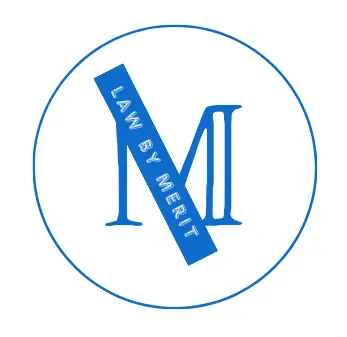When it comes to naming your child, the process is usually guided by cultural norms, legal regulations, and personal preferences. While creativity and uniqueness are encouraged, there are legal limitations that one must consider. This overview will delve into the topic of including a line break in a child’s name, exploring the legal aspects, cultural implications, and practical considerations.
Legal Considerations: Can I legally include a line break in my child’s name?
In most jurisdictions, the process of naming a child is subject to certain legal guidelines to ensure clarity, practicality, and cultural sensitivity. While there might not be a specific law addressing line breaks in names, many legal systems have rules that require names to be easily readable, pronounceable, and non-offensive.
Adding a line break to a child’s name could potentially lead to issues such as confusion in legal documents, administrative challenges, and difficulties in accessing essential services. Legal documents often have limited space for names, and unconventional formatting might result in errors during record-keeping, which could lead to complications in the future.
Cultural Implications: Can I legally include a line break in my child’s name?
Names hold cultural and societal significance, and their conventions vary across different cultures. Some cultures place high importance on tradition and may view unconventional name formatting as disrespectful or inappropriate. In contrast, other cultures might be more open to creative name choices. Considering the cultural implications of including a line break is crucial to avoid unintentional disrespect or misunderstandings.
Furthermore, it’s important to recognize that names often play a role in how individuals are perceived and treated within society. An unconventional name might lead to bias, assumptions, or even discrimination, potentially impacting a child’s social interactions and opportunities.
Practical Considerations: Can I legally include a line break in my child’s name?
Practically speaking, including a line break in a child’s name might lead to technical challenges. Many computer systems and databases are designed to handle standard name formats, and introducing line breaks could cause issues during data entry, form submission, and record retrieval. This could result in administrative errors, delays, and frustrations for both the child and their guardians.
Additionally, the child themselves might face difficulties in learning how to write their name, as line breaks could complicate the process. Simple tasks like filling out forms or introducing themselves might become more complex due to the unconventional name structure.
Can I legally include a line break in my child’s name?
Generally, names can include spaces or hyphens, allowing for line breaks. However, laws vary depending on your jurisdiction. It’s essential to check your local naming regulations and consult legal professionals if needed to ensure you’re following the rules. Remember that unusual or complex names might have consequences for your child later in life, like official documents or automated systems not handling them correctly. Always consider the potential impact on your child before deciding on their name.
Can I legally include a line break in my child’s name? A Global Perspective
Naming a child is a significant decision that is subject to various legal regulations and cultural norms around the world. The inclusion of a line break in a child’s name is a unique consideration, raising questions about its legality and practicality across different regions. This overview will provide an in-depth exploration of the legal stance on including a line break in a child’s name in the USA, UK, Australia, Africa, and even Asia, discussing the laws, cultural implications, and practical considerations associated with each region.
United States (USA): Can I legally include a line break in my child’s name?
In the USA, naming laws vary from state to state. Generally, names must be selected with the child’s best interest in mind and must not include obscenities, numerals, or symbols. While there is no explicit mention of line breaks, the practicality and readability of the name are important considerations. Names with line breaks might pose challenges in legal documents, identification, and official records. Additionally, each state has its own regulations on character limits for names, which could be affected by line breaks.
United Kingdom (UK): Can I legally include a line break in my child’s name?
In the UK, the law requires that names be registered within 42 days of birth. The Registrar General has the authority to reject names deemed offensive, unreasonably long, or likely to cause confusion. While line breaks are not explicitly addressed in the law, the Registrar General’s guidelines emphasize names that can be easily recognized and reproduced. The practicality of including a line break in a name might be evaluated based on these criteria.
Australia: Can I legally include a line break in my child’s name?
Australian naming laws focus on preventing names that are obscene, offensive, or too long. Different states have different regulations, and while there is no direct mention of line breaks, practical considerations come into play. Names with line breaks could face challenges in official documents, identification, and database systems. Furthermore, names should not be misleading or promote illegal activities, and this criterion might be applied to names with unconventional formatting.
Asia: Can I legally include a line break in my child’s name?
Asia encompasses a diverse range of countries, each with its own naming practices and regulations. Some countries, such as China and Japan, have strict regulations on characters allowed in names. Line breaks might be viewed as disrupting the integrity of traditional characters and could be discouraged. In contrast, countries with more flexible naming laws, such as India, might be more open to unique name formatting. However, practicality and cultural acceptance remain important considerations.
Africa: Can I legally include a line break in my child’s name?
African naming customs are deeply rooted in culture and tradition. Many African countries have a rich history of using meaningful names that reflect family heritage, circumstances of birth, or aspirations. While some countries might not have specific laws regarding line breaks, it’s crucial to respect cultural sensitivities and practical considerations. Names with line breaks might not align with traditional naming practices and could be met with resistance or confusion.
RELATED:
Can You Sue Anyone for Anything? (An In-Depth Overview)
Is the Estate of a Deceased Person a Legal Entity? Here’s What You Need To Know
How Can I Legally Include a Line Break in My Child’s Name? A Comprehensive Guide
Choosing a name for your child is a momentous decision, and the desire to include a line break in the name adds an extra layer of uniqueness. However, before proceeding, it’s important to understand the legal process and potential challenges associated with including a line break in your child’s name. This step-by-step guide will walk you through the process, ensuring you are well-informed and prepared for this creative naming choice.
Step 1: Research Your Jurisdiction’s Naming Laws
The first step is to research the naming laws in your jurisdiction. Each country or state has its own regulations governing names, and while many might not specifically mention line breaks, they often have requirements related to readability, practicality, and cultural sensitivity. Familiarize yourself with the laws in your area to understand any potential limitations or considerations for unconventional name formatting.
Step 2: Consult Legal Experts
Before proceeding, it’s highly recommended to consult legal experts who specialize in family law or naming regulations. These professionals can provide you with detailed insights into the legal implications of including a line break in your child’s name. They can help you understand whether your chosen name will comply with existing laws and guide you through the necessary steps to ensure the name is legally recognized.
Step 3: Consider Cultural Implications
Names carry cultural significance, and including a line break could impact how the name is perceived within your cultural context. Consider the traditions, norms, and values associated with names in your culture. Some cultures might be more open to creative name choices, while others could view unconventional formatting as disrespectful or inappropriate. Understanding and respecting these cultural implications is essential.
Step 4: Evaluate Practical Considerations
Practicality is a crucial aspect of including a line break in your child’s name. Think about the potential challenges this formatting might pose in everyday situations. Administrative processes, such as filling out forms, official documents, and record-keeping, could be complicated by an unconventional name structure. Additionally, your child might face challenges in learning to write and spell their name with a line break.
Step 5: Prepare Legal Documentation
If, after thorough consideration, you decide to move forward with including a line break in your child’s name, you’ll need to prepare the necessary legal documentation. This might include affidavits explaining the reason for the unique formatting, as well as any other documents required by your jurisdiction. Your legal experts can guide you through the specific requirements and help you complete the paperwork accurately.
Step 6: Apply for Name Registration
In many jurisdictions, names need to be officially registered with the appropriate government agency. Depending on where you live, this might involve submitting forms, providing documentation, and paying fees. Be prepared for potential delays or extra scrutiny due to the unconventional name formatting. Your legal experts can guide you through the application process to ensure all requirements are met.
Step 7: Be Prepared for Potential Challenges
While the goal is to legally include a line break in your child’s name, it’s important to be prepared for potential challenges. Administrative errors, misunderstandings, or even rejections from authorities could occur. Be patient and persistent throughout the process, and maintain open communication with the relevant agencies and officials.
Step 8: Educate Your Child
If your child’s name includes a line break, it’s important to educate them about the formatting and its significance. Help them understand how to write, spell, and introduce themselves with their unique name. Additionally, prepare them for potential questions or reactions from others, ensuring they are proud of their name choice.
Including a line break in your child’s name is a creative and unique choice that requires careful consideration and adherence to legal processes. By thoroughly researching your jurisdiction’s naming laws, consulting legal experts, understanding cultural implications, and evaluating practical considerations, you can navigate the journey of legally incorporating a line break in your child’s name. While challenges might arise, with the right preparation and perseverance, you can ensure that your child’s name reflects your creativity while also complying with legal requirements.
Last updated on: April 11, 2024




